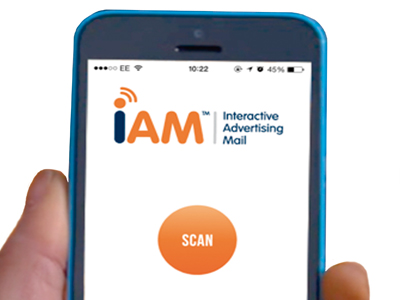Technology that links print with the online and mobile world is developing fast – Documobi is at the forefront of making print work smarter.
There is a fundamental difference in how printers and how agencies and marketers view image recognition technology that takes print into mobile, and Sophie Lancaster, client services director of Documobi – and daughter of chief executive officer Peter Lancaster – sums it up quite neatly.
‘My experience of printers is that they say “oh, you scan print”; whereas agencies say “oh, you use a database and that means the brand can have this and that”.’
It’s a distinction that her father goes on to emphasise, saying: ‘It’s not about the scanning, that’s just an access technology. If people get hung up on this technology or that they are totally missing the point. We can make stuff interactive that you simply cannot do with other things.’
The mantra at Documobi, Mr Lancaster said, is ‘let’s make print work smarter and harder and mobile first, which is what the brands are after’. It is about data-driven engagement between consumers and brands. Behind the scanning technology (which Documobi calls iPR – intelligent Print Recognition) is a full eco system and database, fully integrated with DirectSmile, that can link into a brand’s CRM and tie in with loyalty schemes.
Mr Lancaster traces the development of Documobi back to January 2009, when Microsoft launched the MS Tag as an alternative to QR codes. He believed that print needed to do much better and he started researching the market, splitting his time between the US and the UK (he is Harrogate born and bred). This went on for a couple of years until the launch of Documobi in 2011 at Graph Expo. In the meantime, the app and all of the infrastructure around it had been created by developers around the world. Then, late in 2014, Documobi was granted a US patent for parts of its technology. Having achieved the patent, Documobi will be coming out from ‘under the radar’ according to Mr Lancaster.
‘People are just experimenting with Augmented Reality and QR, but it’s not really doing anything. For a start, whose app are you going to use? We came up with an entirely different proposition – one built from the ground up to work with print, packaging, billboards etc. – which makes us unique. We don’t want anyone to download our app. Our proposition is that we embed our technology inside an existing brand app. It’s not about the scanning – that’s just an access point.’
Mr Lancaster showed Digital Printer a demonstration, in which the iPR technology was embedded in a major retailer’s app. Products made interactive sit in that retailer’s repository of imagery on the system, so that when, for example, a consumer scans a product with their mobile phone they will go to that retailer’s content. In the example shown, the consumer was able to inform the supermarket that they required a gluten-free version of the product, leading to the recommendation of an alternative and a 10%-off redemption opportunity. Through the system, the consumer is also able to share the engagement through social media. While this description is simply of a one-off transaction, the information on it and the consumer’s preferences remain within the underlying database and are therefore accessible by the brand’s CRM system to guide further activity.
‘What we do is marketing,’ said Mr Lancaster. ‘It’s building customer data. It’s about acquisition, loyalty, all those things. We are data driven; this is pull, not push. We are trying to build a relationship between the brand and the consumer on the phone.’
Documobi is being used by a number of progressive printing firms in the UK – Mr Lancaster mentions the likes of Precision Printing, Pureprint, Brilliant Media and Latcham Direct – but these are the kinds of companies that are more likely to ‘have the ear of the brand’, and he is quite aware that selling this technology into a retailer or blue chip organisation is a tough task for a smaller print company. It was for this reason that iAM was introduced. Interactive Advertising Mail is iPR wrapped into a simple package that printers producing ‘a modicum’ of direct mail can use.
Again Mr Lancaster gave a demonstration, this time with iAM being used to apply for a credit card from a printed mailer via a mobile phone app. ‘The call to action is stronger through a mobile app: you can do it at the kitchen table and get approval for a credit card in minutes; and it saves the brand the costs of having to rekey information from an application form. We have just driven a horse and cart through the redemption process.’
Smarter and faster – it’s what consumers, especially the younger demographic, want, and mobile is the vehicle of choice.





